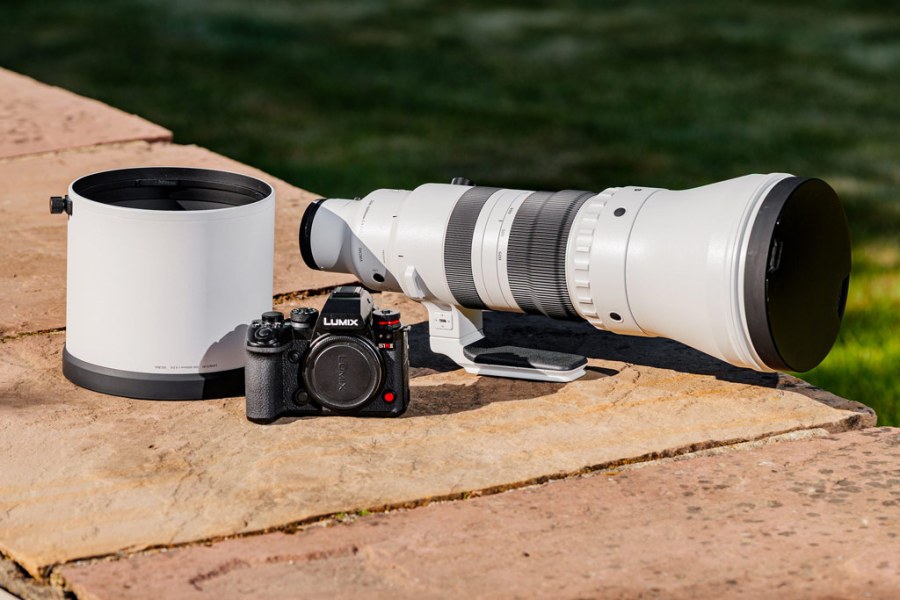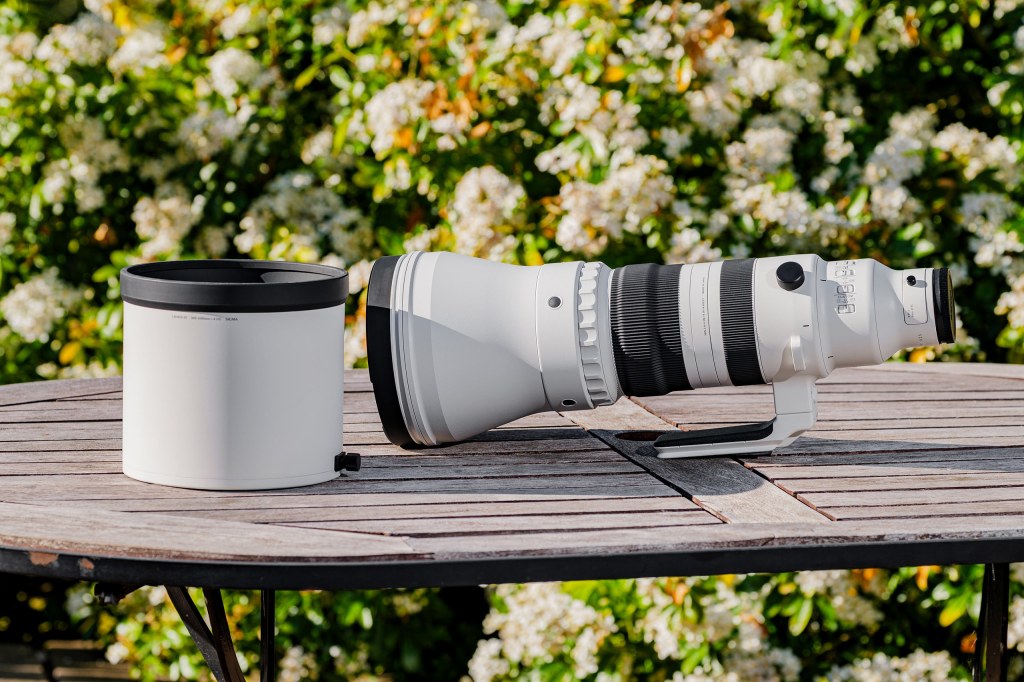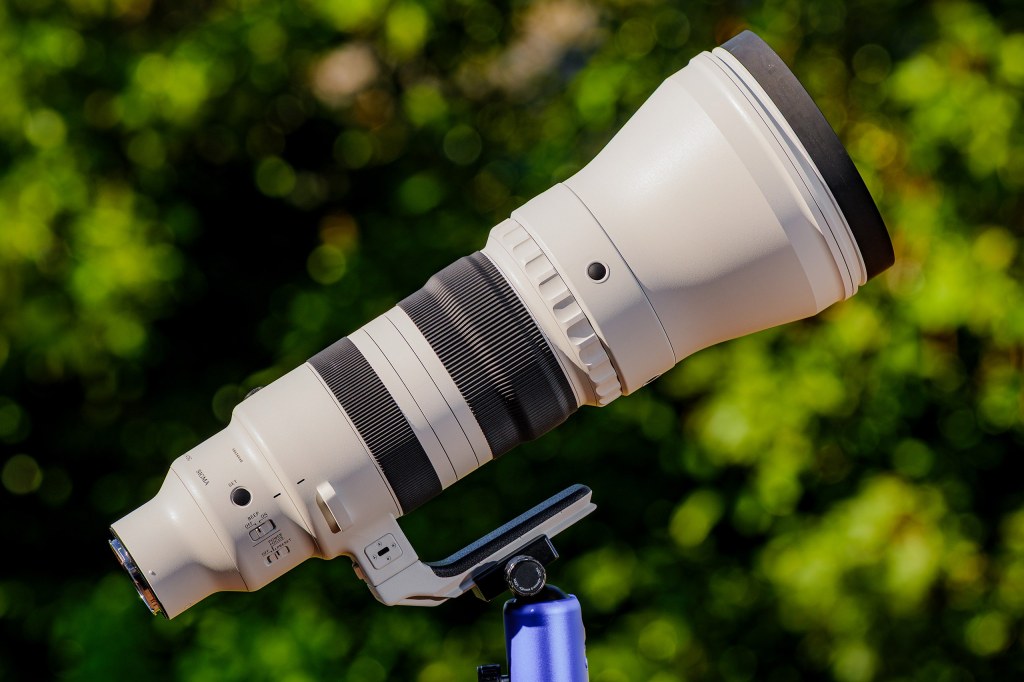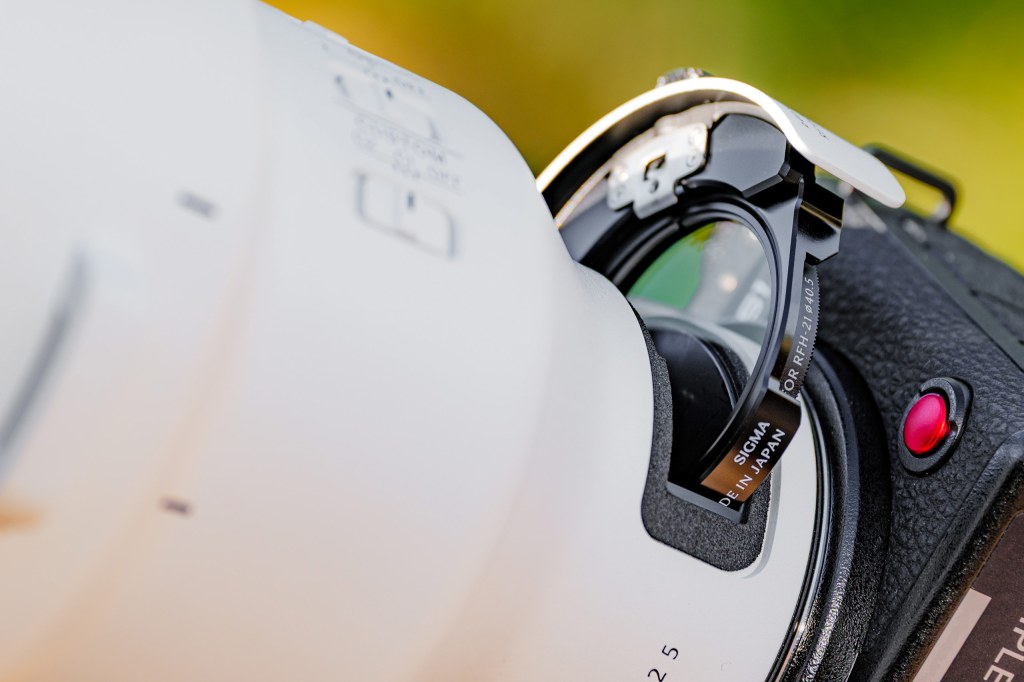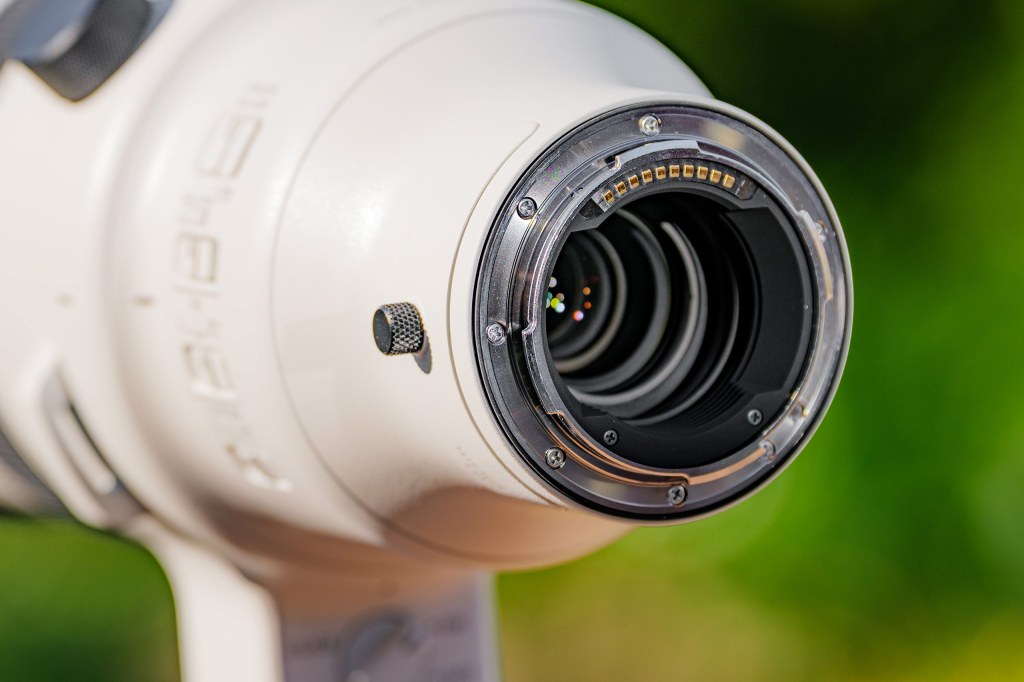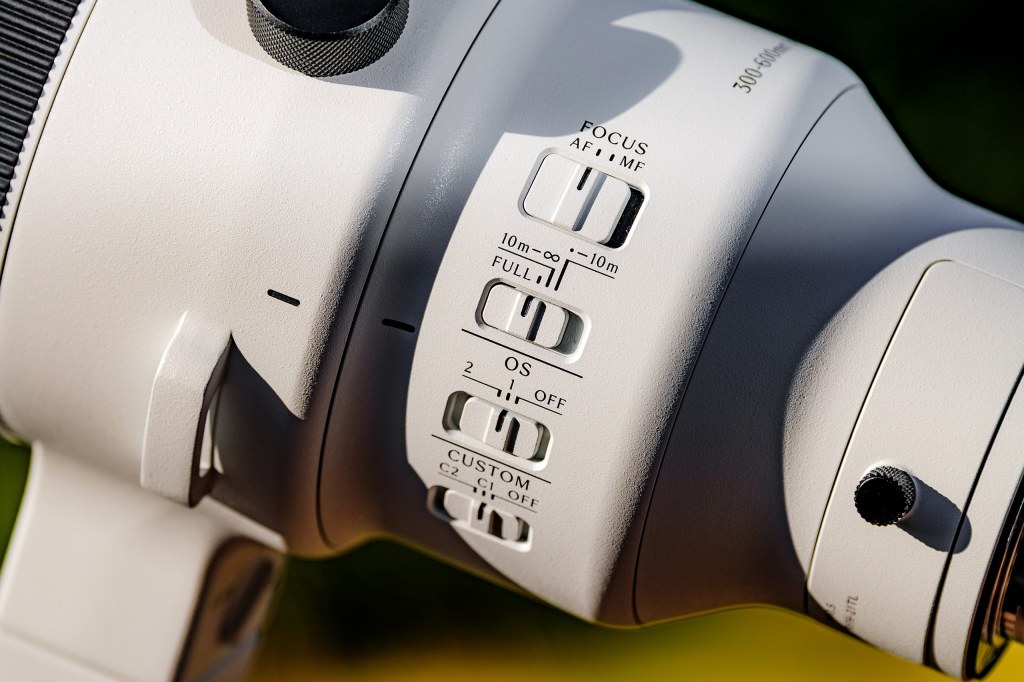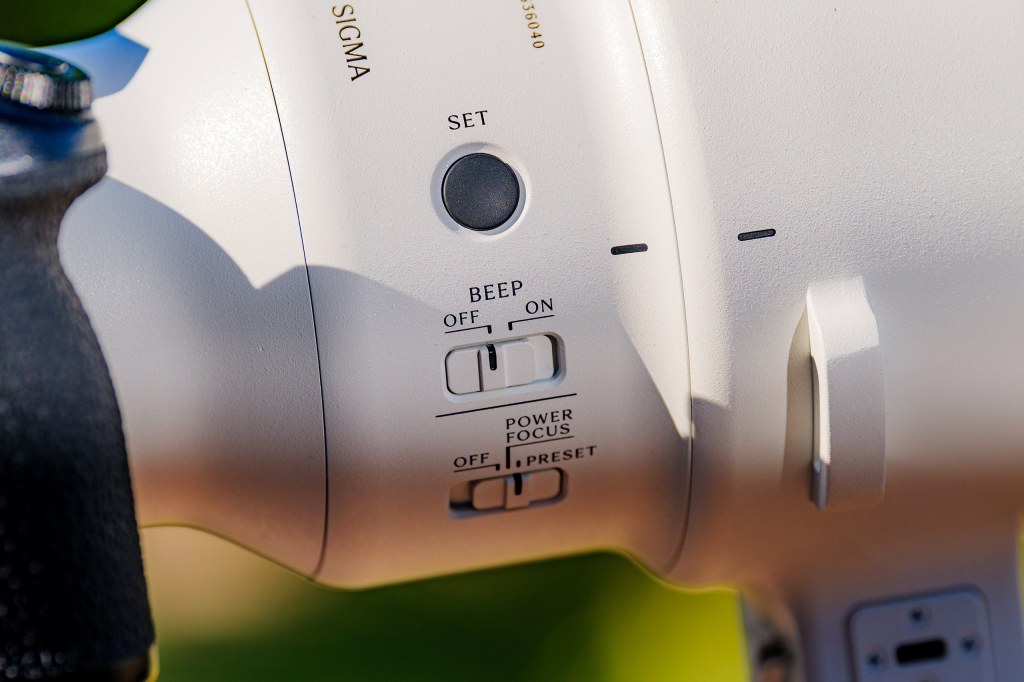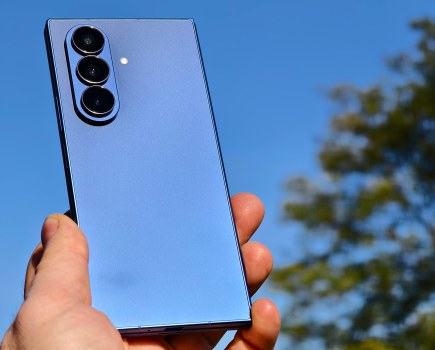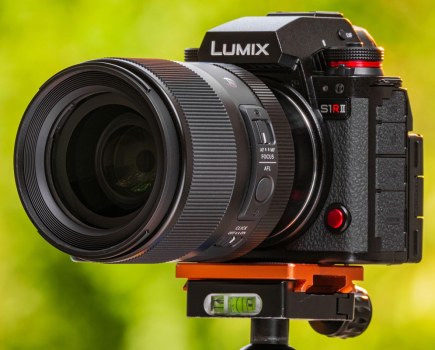Amateur Photographer verdict
A sharp, distortion free lens, that delivers exceptional resolution and fast autofocus. With its combination of long zoom range and fast aperture it represents very good value – but it is rather large- Exceptional image quality between f/5.6 and f/16
- Great design for handling
- Excellent AF
- Despite the cost it is excellent value for money
- L mount version compatible with tele-converters
- Inevitably big and heavy
- Slight quality drop at f/4
- Sigma 300-600mm F4 DG OS Sports full specifications
Sigma 300-600mm F4 DG OS Sports at a glance:
- Price: $5,999/£5,899
- L-mount, Sony E-mount
- 2.8 – 4.5m minimum focus
- 40.5mm filter thread
- 467.9mm x 167mm
- 3970g
- sigma.com
The problem with long lenses for wildlife and sports is that they come with compromises. I very often find that an ‘incredible’ focal length doesn’t get me quite as close to the subject as I had imagined it would. Distant beasts still look disappointingly distant and small in the frame. Then there’s the sliding maximum aperture, which means we need ISO 6400 even on a bright day to combine decent sharpness with a shutter speed that freezes the action. The long lenses that circumvent these issues then run into the additional nuisances of size, weight and cost. It’s annoying that even in 2025, we still can’t have it all.
This new Sigma 300-600mm F4 DG OS Sports lens is another that can’t give us it all, but with its very useful zoom range, a constant and fast maximum aperture, and a semi-affordable $5,999/£5,899 price tag it may come close – so long as it maintains the company’s recent form for excellent image quality. Sigma claims the lens gives us the quality of a fixed focal length lens but in a zoom format, so it’s setting our expectations pretty high from the off.
Sigma 300-600mm F4 DG OS Sports – Features
The Sigma 300-600mm F4 DG OS zoom is a lens designed for full frame mirrorless cameras, and it sits in the ‘Sports’ segment of the company’s optical offering. It’s likely the first thing you will notice about this model is that it is quite big, so let’s deal with that first. If carrying weight is an issue for you, a Sherpa might be employed to haul the 3985g kit when you aren’t using it, and again to hold it to your eye when you are. It is a heavy lens, but it actually not quite as big as it at first looks – well, it is, but it’s the lens hood that makes it look particularly massive/impressive.
The lens itself is 467.9mm long with a barrel diameter of 167mm at the extreme end, but the detachable lens hood is responsible for a great deal of the appearance of bulk. With a length of 165mm and a diameter of 184mm, a substantial birthday cake for eight hungry children could easily be baked inside the hood if you lined it with greaseproof paper. Though it is big it really isn’t heavy, so it doesn’t have a dramatic impact on the balance of the set-up.
The weight of the lens can be accounted for by the solid construction of the magnesium alloy body and the 28 elements that are used inside it. We get 6 elements in Sigma’s fluorite-like FLD glass and one in Super Low Dispersion glass, and an iris that features 13 blades to create a rounded aperture. While the front element measures over 140mm, users will be glad to know Sigma has incorporated a rear-filter system so 40.5mm circular filters can be loaded at the exit end of the optical path using the Sigma RFH-21 filter holder – that’s unique to this lens.
The maximum aperture is f/4 at all focal length settings, and the smallest aperture on offer is a modest f/22. Obviously not a macro lens, our greatest reproduction ratio is 1:6, which is achieved at the 470mm focal length setting. At the 300mm mark, the closest we can focus is 2.8m, and at 600mm, that extends to 4.5m.
The lens comes in a choice of L or Sony E mounts, and is equipped as standard with a tripod foot, a shoulder strap, the hood and the filter holder, and a dinner plate-sized lens cap. The L mount version of the lens is compatible with Sigma’s 1.4x and 2x teleconverters, taking the maximum effective focal length to 840mm and 1200mm, respectively.
Sigma 300-600mm F4 DG OS Sports – Handling
Perhaps in acknowledgement that this is a big and heavy lens Sigma has done everything it can to make it as easy to use as possible. The Arca Swiss style tripod foot is substantial, robust and padded, which makes carrying it and fitting it to a tripod a whole lot easier than it could have been. When hand holding the lens, which you will do at some point, you’ll find all the controls you need right where your hand is. While the lens might be 615mm long with the lens hood attached, all the controls you’ll need when shooting are concentrated within a 60mm range. Here you’ll find the zoom ring, the function buttons and the new function ring.
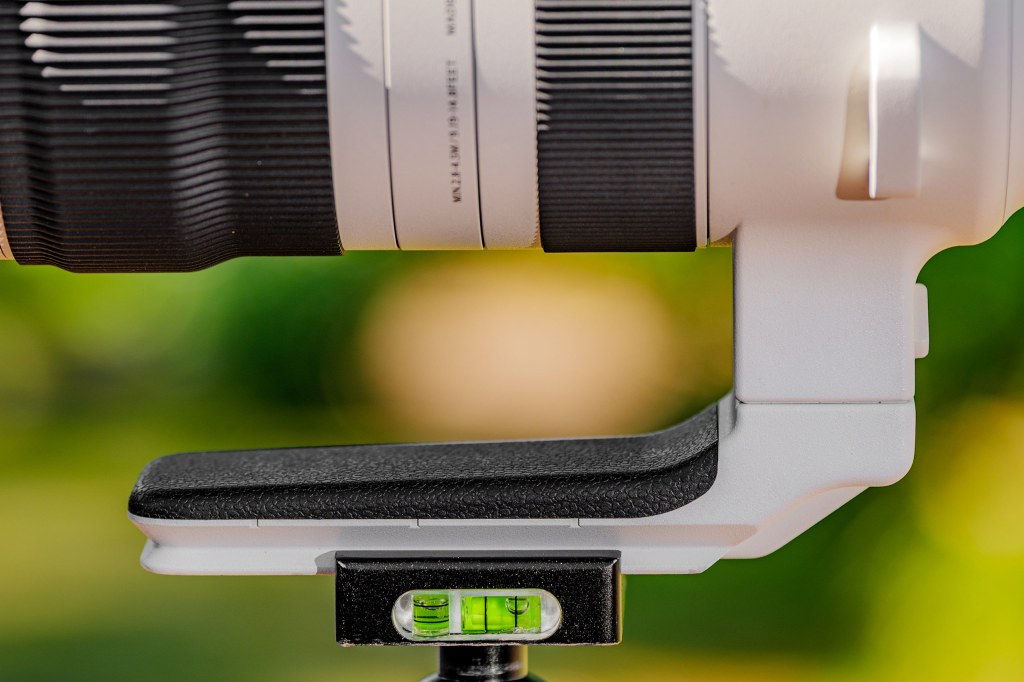
Function buttons we have seen before, and on this model we have four of them that we can customise to our liking – AF on or AF lock in most cases. The Function ring though is new with this 300-600mm, and gives us a choice of two functions. Via a physical switch on the barrel we can leave the ring inactive, use it to pull the focus back quickly to a set position or turn it to transition focus slowly between two points during filming. While the function button options are chosen via the camera’s menu system from a list of 36 possible functions (in Lumix cameras at least), the function of the ring is limited by its physical switch to only two. I can’t help feeling Sigma could make a bit more of this ring if its operation could be controlled in-camera.
At the slimmer end of the barrel, we have the usual collection of image stabilisation options, a three-way focus distance limiter, AF/MF switch and the switch to turn on and off the bleep. We also have the custom mode switch that allows us to quickly engage a collection of settings around OS, AF speed and focus ranges we have established via Sigma’s Optimization Pro software.
Sigma 300-600mm F4 DG OS Sports – Image quality and performance
When any company declares that their zoom lens is as good as any fixed lens of the corresponding focal length, I’m delighted. It’s such a claim as to be a red rag to a bull for a lens reviewer. Rarely is the claim fully justified. This case is challenging as we are looking at very long focal lengths and a wide aperture, and I have to ask myself whether we would expect to get the best from a 600mm fixed focal length lens when used at f/4 – and I suspect that we would experience similar resolution loss with any such lens when compared to the drop in quality we get when using the Sigma 300-600mm wide open at f/4.
Fortunately, ‘wide open’ here is pretty wide for a telezoom, and it isn’t too much of a hardship to close the aperture by a stop to get dramatically better sharpness and contrast. Similarly, we won’t get the best from the lens when it’s closed to f/22, but f/16 is very good – so we need to work between f/5.6 and f/16, which gives us plenty of options across that four-stop range. I found f/7.1 and f/8 particularly good, and kept the aperture in that area most of the time.
At these settings, resolution is exceptional, and you won’t experience a hint of colour fringing or aberrations to impact sharpness right to the corner of the frame. Vignetting is eliminated either by the optical design or its partnership with the camera’s firmware and there’s no sign of distortion. And the High-response Linear Actuator that runs the AF system is speedy and … responsive. The lens finds the subject quickly and is able to track as fast as the Lumix S1Rll camera can. Sigma claims the Optical Stabilisation system gives us 5.5 stops at 600mm, and I have no reason to doubt that – in stills or video mode. This is a top flight performance.
Verdict
Some lenses are just very exciting to use, and this Sigma 300-600mm F4 DG OS is one of them. The focal range is exciting but so are the results it produces. We can relax when shooting as we don’t need to keep an eye out for certain settings or situations that will degrade the image – just avoid f/4 and f/22 when you can. The lens is more of an effort to use than a 50mm standard lens, and it takes more preparation and energy, but Sigma respects those extra exertions with its own endeavours to make the lens easier to use and with its labours to ensure when our focus is true our pictures are filled with detail.
At almost £5,900 this isn’t going to be an impulse purchase and most of us won’t be able to justify the cost, but the price alone doesn’t make this an expensive lens – just one that costs a lot. With its combination of zoom range and fast aperture, it actually presents very good value in comparison to the other lenses in this area, and if this is the kind of lens you need, it is a really compelling proposition. I’ve loved using it, and loved looking at what it has done to my wildlife photography. They say a new lens isn’t going to improve your pictures, but ‘they’ haven’t tried the Sigma 300-600mm F4 DG OS Sports.

Specifications
| Price | £5899 |
| Filter Diameter | 40.5mm (rear) |
| Lens Elements | 28 |
| Groups | 21 |
| Diaphragm blades | 13 |
| Aperture | f/4 – f/22 |
| Minimum focus | 280 – 450cm |
| Length | 467.9mm |
| Diameter | 167mm |
| Weight | 3970g |
| Lens Mount | L-mount, Sony E |
| Included accessories | Caps, hood, tripod foot |

